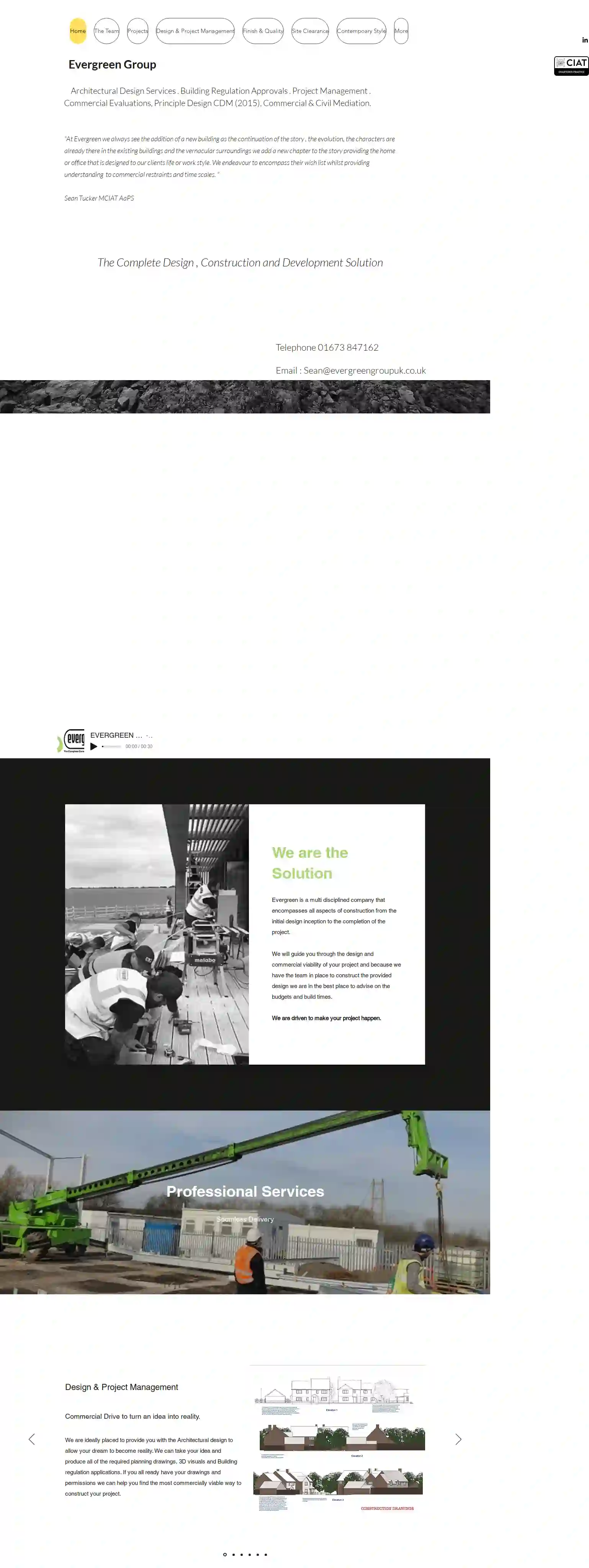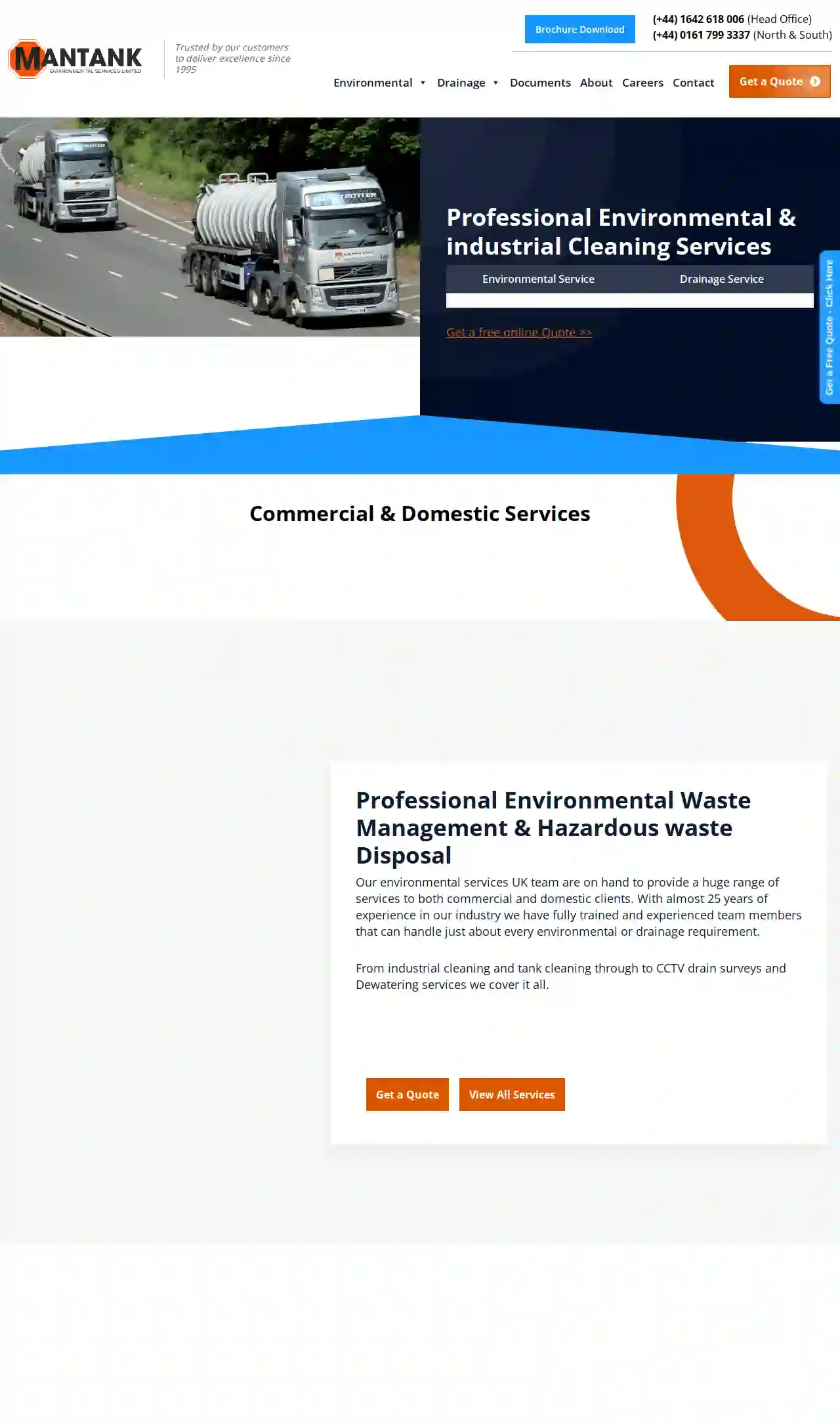Excavation Contractors Hedon
Top Excavation Services in Hedon
Receive up to 3 Excavating Contractors quotes for your project today! Compare profiles, reviews, accreditations, portfolio, etc... and choose the best deal.

Archaeological Project Services
51 reviewsThe Old School, Cameron Street, The Old School Cameron Street Heckington Lincolnshire, Heckington, NG34 9RW, GBAbout APS Archaeological Project Services (APS) is a long-established organisation offering a comprehensive range of consultancy and fieldwork services. Based in Heckington, Lincolnshire, we serve clients across the construction and development industries, public bodies and private individuals throughout the country. Commission us APS offer cost-effective, tailor-made solutions to all archaeological and cultural heritage needs in the planning and development processes. Our highly experienced project management team will respond quickly to find the right solution for your project, from initial planning through site investigation to mitigation and report publication. Community Support for community-led heritage projects
- Services
- Why Us?
- Gallery
Get Quote
Evergreen Construction (Market Rasen) Limited
The Workshop, Friesthorpe Road, Buslingthorpe, LN3 5AQ, GBEvergreen Group: Your Complete Construction Solution Evergreen is a multi-disciplinary company that encompasses all aspects of construction, from the initial design inception to the completion of the project. We guide you through the design and commercial viability of your project, and because we have the team in place to construct the provided design, we are in the best place to advise on budgets and build times. We are driven to make your project happen. We are ideally placed to provide you with the Architectural design to allow your dream to become reality. We can take your idea and produce all of the required planning drawings, 3D visuals, and Building regulation applications. If you already have your drawings and permissions, we can help you find the most commercially viable way to construct your project. At Evergreen, we always see the addition of a new building as the continuation of the story, the evolution. The characters are already there in the existing buildings and the vernacular surroundings. We add a new chapter to the story, providing the home or office that is designed to our clients' life or work style. We endeavor to encompass their wish list while providing understanding to commercial restraints and time scales.
- Services
- Why Us?
- Our Team
- Gallery
Get Quote
Ten Four Landscape Construction
517 reviews4 Walker Road, Norfolk, 02056, GBTen Four Landscape Construction: Your Norfolk, MA Landscaping Experts Ten Four Landscape Construction is a full-service landscaping company in Norfolk, MA, specializing in hardscape construction, lawn maintenance, commercial snow removal, and more. Owner Seth Dias started working in landscaping as early as elementary school, helping his neighbors. His passion for landscaping grew, leading him to attend Norfolk County Agricultural High School to further his knowledge. Ten Four has flourished due to a commitment to honesty, accuracy, and open communication. They understand that every project is different, which is why they take the time to listen to the customer and work with a professional local landscape designer and highly-experienced crews to achieve their goals and exceed expectations. Whether you need routine seasonal maintenance or are looking to completely transform your property with a new patio, walkway, or outdoor living area, you can count on the team at Ten Four to take your property to the next level. Ten Four Landscape Construction is a family-owned and operated business that has been serving the Norfolk, MA area since 2012. They are fully licensed and insured, and they take pride in providing fair and honest estimates. Their projects stay on-time and on-budget, and you'll work with a professional landscape designer. They also offer 24/7 service for commercial snow removal.
- Services
- Why Us?
- Our Team
- Testimonials
- Gallery
Get Quote
Next Level Environmental
51 reviews45 Dan Road, Canton, 02021, GBNext Level Environmental, LLC Next Level Environmental, LLC is a professional services firm located in Canton, Massachusetts. Founded in 2018, Next Level is built on the professional and technical expertise accumulated over a combined 20+ years by its founders. Field services offered include specializing in inspecting, maintaining, and rehabilitating buried infrastructure. Typical types of clients include public and private utilities such as department of public works or sewer commissions and construction companies specializing in utility and site work construction. Having deep experience in the environmental industry, Next Level has a significant advantage by providing an integrated approach for managing the challenges utilities face when it comes to their aging infrastructure. We specialize in inspecting, maintaining, and rehabilitating buried infrastructure. Our typical types of clients include public and private utilities such as department of public works or sewer commissions and construction companies specializing in utility and site work construction. Having deep experience in the environmental industry, Next Level has a significant advantage by providing an integrated approach for managing the challenges utilities face when it comes to their aging infrastructure.
- Services
- Why Us?
- Gallery
Get Quote
McCourt Construction Co
4.49 reviews60 K Street, Boston, 02127, GBBuilding America Since 1893 McCourt Construction is among America’s premier general contractors. Based in Boston for over 130 years, McCourt is an experienced, comprehensive contractor focused on heavy civil construction projects. The company’s portfolio includes a variety of public, private, and institutional projects ranging in value from tens of thousands of dollars to $300 million. New England’s Premier Heavy Civil Contractor Since 1893 McCourt Construction is honored to have contributed to numerous historic and prestigious college projects in Boston, MA. Whether constructing new academic buildings or renovating existing facilities, McCourt Construction is a reliable and efficient partner dedicated to delivering high-quality results that enhance learning environments for future generations.
- Services
- Why Us?
- Gallery
Get Quote
AOK LANDSCAPING INC.
4.47 reviews144 Bullock Drive, Unit 2B, Markham, L3P 1W2, GBEXPERIENCE. RELIABLE. HONEST. SINCE 1981. WE ARE THE LEADERS FOR SNOW PLOWING IN SCARBOROUGH. AND MARKHAM. FEW OTHER LANDSCAPING AND CONSTRUCTION COMPANIES CAN BOAST 41 YEARS IN THE SNOW REMOVAL BUSINESS. AOK LANDSCAPING IN SCARBOROUGH HAS THE EQUIPMENT AND MANPOWER TO GIVE YOU PEACE OF MIND. CALL AOK LANDSCAPING SNOW PLOWING FOR A QUOTE TODAY.
- Services
- Why Us?
- Gallery
Get Quote
C.K.C. Landscaping
4.913 reviewsPO Box 383, Gorham, 04038, GBC.K.C. Landscaping is the region's premier, full-service landscape contractor, providing high-end design, installation, and maintenance services to its clients since 1989. With a team of licensed professionals, we offer a wide range of services, including landscape design implementation, hydro seeding, excavation, and more. Our commitment to quality workmanship and dependable service has earned us a reputation as a trusted and reliable partner for all your landscaping needs.
- Services
- Why Us?
- Accreditations
- Our Team
- Testimonials
- Gallery
Get Quote
Hard-Co Landscape Supplies
4.213 reviews625 Conlin Rd, Whitby, ON, 625 Conlin Rd Whitby, L1R 2W8, GBProviding a Superior Level of Service Hard-Co Construction Ltd. employs over 110 individuals during the peak construction season, with everyone focused on achieving the highest quality workmanship to ensure a superior level of service. Quality Construction Since 1986 Throughout past decades and continuing today, both the business ethics and quality workmanship of Hard-Co have led to meaningful relationships with municipalities to improve urban infrastructure. Our Community Hard-Co likes to stay involved in the local community. Please click below to see photos of our 800 Excavator decorated for the Christmas season or to see the many other ways we are involved.
- Services
- Why Us?
- Gallery
Get Quote
Mantank Environmental Services Scunthorpe
3.73 reviewsCoal Pit Lane, Atherton, M46 0FY, GBMantank Environmental Services Mantank Environmental Services is a leading provider of environmental and drainage services across the UK. We have been trusted by our customers to deliver excellence since 1995, and we are committed to providing our clients with the highest quality services at competitive prices. Our Services We offer a wide range of services to meet the needs of our clients, including: Tank Cleaning Industrial Cleaning Sewage Tank Cleaning Tank Decommissioning Chemical Waste Disposal Environmental Services UK Water Tank Cleaning Dewatering Services Waste Management Company Water Jetting Vessel Cleaning Industrial Vacuum Sludge and Silt Removal Industrial Tank Cleaning SuDS Pond Maintenance CCTV Drain Survey Drain Camera Drain Clearance Drain Inspection Drain Repair Drainage Services Our Commitment to Excellence We are committed to providing our clients with the highest quality services. We are fully accredited and insured, and we have a team of experienced and qualified professionals who are dedicated to providing our clients with the best possible service. Contact Us If you are looking for a quote or just some advice, please feel free to contact us. We are always happy to help.
- Services
- Why Us?
- Accreditations
- Gallery
Get Quote
Synergy Construction Group
599 East Broadway, Boston, 02127, GBBuilding Boston's trust with quality construction every step of the way We are a Boston based construction company specializing in ground up construction and renovations. Here at Synergy Construction, our extensive relationships with reliable subcontractors combined with years of experience in project management lead to beautiful homes and and apartments alike. Working Together At Synergy Construction, we offer an end-to-end client experience that includes seamless communication, budgeting, staffing, on-site organization, and solid, quality construction every time. Because thats what building in Boston means to us. Why Choose Synergy? Here at Synergy Construction, we work closely with architects and designers to produce beautiful, functional structures. Call us today and we'll be sure to bring our project management skills and extensive construction experience to your next Boston project.
- Services
- Why Us?
- Our Team
Get Quote
Over 13,059+ Excavation Businesses on our directory
Our excavation pros operate in Hedon & surrounding areas!
ExcavationHQ has curated and vetted Top Excavation Companies arround Hedon. Find a reliable contractor today.
Frequently Asked Questions About Excavation Contractors
- Soil Type and Stability: Stable, cohesive soils allow for deeper excavations than loose or unstable soils.
- Groundwater Level: Excavations below the water table require dewatering techniques to manage water intrusion.
- Equipment and Resources: The size and capabilities of excavation equipment influence the achievable depth.
- Safety Regulations: OSHA and other safety regulations impose limitations on trench depths without proper shoring or sloping.
- Project Requirements: The purpose of the excavation (basement, pool, foundation) determines the necessary depth.
- Topsoil Removal: Stripping the fertile topsoil layer from a site, often preserving it for landscaping.
- Trench Excavation: Digging long, narrow trenches for utilities (pipes, cables) or foundations.
- Basement Excavation: Removing earth to create a space for a basement beneath a structure.
- Pool Excavation: Digging a precise hole for installing a swimming pool.
- Roadway Excavation: Removing earth and preparing the ground for road construction.
- Demolition Excavation: Clearing debris and preparing the site after demolition.
- Channel Excavation: Creating channels for drainage or irrigation.
- Determining Soil Suitability: Assessing whether the soil can support the intended structure or load.
- Recommending Foundation Types: Advising on the appropriate foundation design based on soil characteristics.
- Addressing Drainage and Erosion Issues: Providing solutions to manage water runoff and prevent erosion.
- Evaluating Slope Stability: Assessing the risk of landslides or soil movement on slopes.
- Building on challenging soil types (expansive clay, loose sand, etc.)
- Constructing large or complex structures
- Excavating near slopes or retaining walls
- Addressing drainage or erosion concerns
- New Construction: Laying foundations, basements, or underground utilities for new buildings.
- Home Additions: Creating space for new rooms, basements, or extensions.
- Landscaping: Leveling ground, creating slopes, installing retaining walls, or digging for ponds or pools.
- Drainage Improvement: Installing French drains, drainage ditches, or swales to manage water runoff.
- Utility Installation or Repair: Laying new water, sewer, gas, or electrical lines, or repairing existing ones.
- Demolition: Clearing debris and preparing the site after demolishing a structure.
How deep can you excavate?
What are the different types of excavation?
What is a soil engineer, and do I need one?
How do I know if I need excavation for my project?
How deep can you excavate?
- Soil Type and Stability: Stable, cohesive soils allow for deeper excavations than loose or unstable soils.
- Groundwater Level: Excavations below the water table require dewatering techniques to manage water intrusion.
- Equipment and Resources: The size and capabilities of excavation equipment influence the achievable depth.
- Safety Regulations: OSHA and other safety regulations impose limitations on trench depths without proper shoring or sloping.
- Project Requirements: The purpose of the excavation (basement, pool, foundation) determines the necessary depth.
What are the different types of excavation?
- Topsoil Removal: Stripping the fertile topsoil layer from a site, often preserving it for landscaping.
- Trench Excavation: Digging long, narrow trenches for utilities (pipes, cables) or foundations.
- Basement Excavation: Removing earth to create a space for a basement beneath a structure.
- Pool Excavation: Digging a precise hole for installing a swimming pool.
- Roadway Excavation: Removing earth and preparing the ground for road construction.
- Demolition Excavation: Clearing debris and preparing the site after demolition.
- Channel Excavation: Creating channels for drainage or irrigation.
What is a soil engineer, and do I need one?
- Determining Soil Suitability: Assessing whether the soil can support the intended structure or load.
- Recommending Foundation Types: Advising on the appropriate foundation design based on soil characteristics.
- Addressing Drainage and Erosion Issues: Providing solutions to manage water runoff and prevent erosion.
- Evaluating Slope Stability: Assessing the risk of landslides or soil movement on slopes.
- Building on challenging soil types (expansive clay, loose sand, etc.)
- Constructing large or complex structures
- Excavating near slopes or retaining walls
- Addressing drainage or erosion concerns
How do I know if I need excavation for my project?
- New Construction: Laying foundations, basements, or underground utilities for new buildings.
- Home Additions: Creating space for new rooms, basements, or extensions.
- Landscaping: Leveling ground, creating slopes, installing retaining walls, or digging for ponds or pools.
- Drainage Improvement: Installing French drains, drainage ditches, or swales to manage water runoff.
- Utility Installation or Repair: Laying new water, sewer, gas, or electrical lines, or repairing existing ones.
- Demolition: Clearing debris and preparing the site after demolishing a structure.